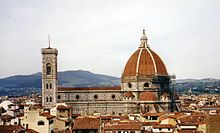نخونی از دستت رفته
نخونی از دستت رفتهنخونی از دستت رفته
نخونی از دستت رفتهArchitecture
For a topical guide to this subject, see Outline of architecture.

Architecture (Latin „architectura“, from the Greek „arkitekton“, ὰρχιτεκτονική – arkhitektonike, from ὰρχι chief or leader and Τεκτονική builder or carpenter) is the art and science of designing buildings and other physical structures.
Architecture is both the process and product of planning, designing and constructing space that reflects functional, social, and aesthetic considerations. It requires the manipulation and coordination of material, technology, light, and shadow. Architecture also encompasses the pragmatic aspects of realizing designed spaces, such as project planning, cost estimating and construction administration. A wider definition may comprise all design activity from the macro-level (urban design, landscape architecture) to the micro-level (construction details and furniture). In fact, architecture today may refer to the activity of designing any kind of system and is often used in the IT world.
Architectural works are often perceived as cultural and political symbols and as works of art. Historical civilizations are often identified with their surviving architectural achievements.



























